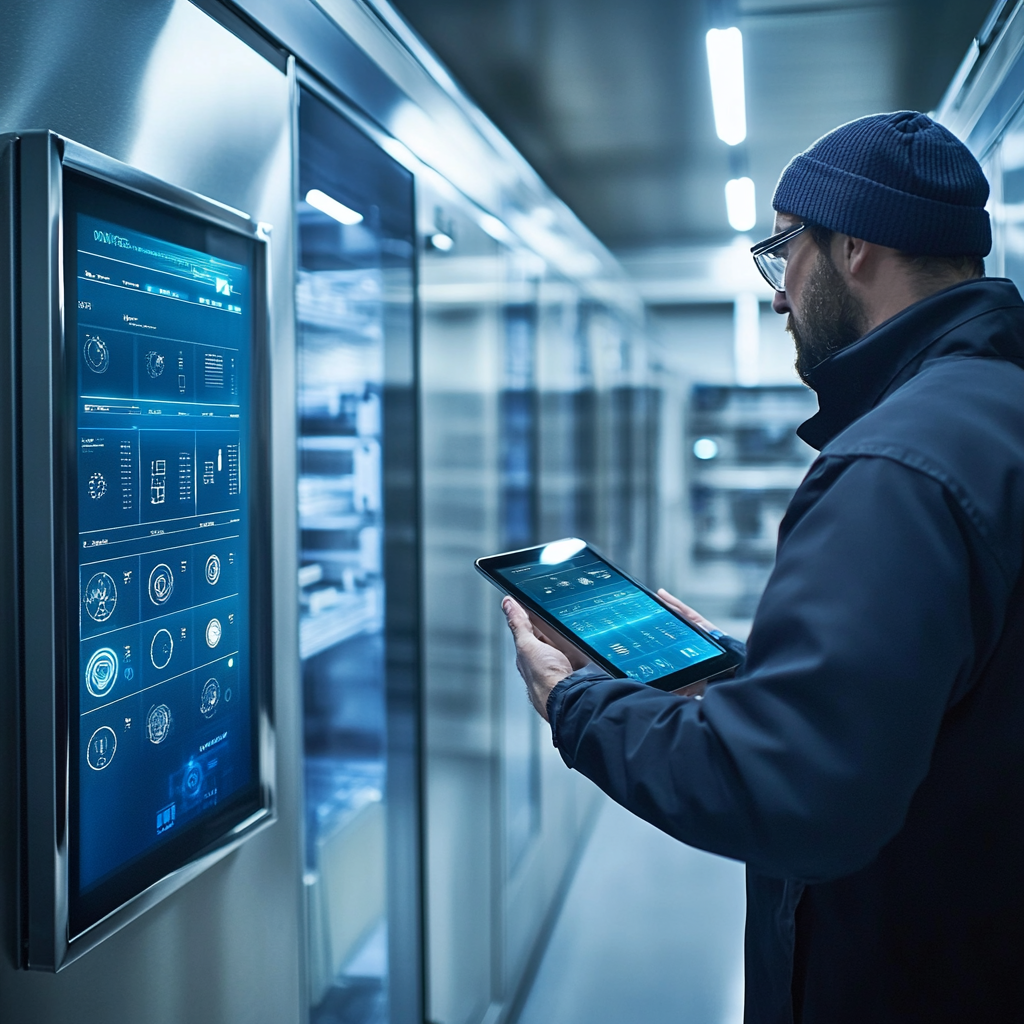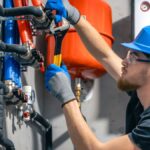The commercial refrigeration landscape has undergone a remarkable metamorphosis, where traditional walk-in freezer repair services are evolving into sophisticated ecosystem management systems. Think of modern walk-in freezers as the nervous system of commercial food operations—when they malfunction, it’s not just about fixing broken parts anymore; it’s about restoring the intricate dance between artificial intelligence, IoT sensors, and predictive analytics that keeps our food supply chain humming.
Understanding the cost implications and smart investment strategies for commercial refrigeration maintenance reveals how modern repair approaches have shifted from reactive troubleshooting to proactive ecosystem optimization. This evolution reflects a broader transformation where walk-in freezer repair has become less about emergency fixes and more about maintaining the technological symphony that preserves billions of dollars worth of inventory daily.
The Sensor Symphony: When Freezers Become Fortune Tellers
Modern walk-in freezer repair isn’t just about replacing compressors and cleaning coils anymore—it’s about interpreting the digital conversation happening between thousands of sensors embedded throughout commercial cooling systems. These sensors function like a freezer’s equivalent of a medical monitoring system, constantly checking vital signs and predicting potential failures before they occur.
When technicians arrive for walk-in freezer repair calls today, they often discover that the “broken” freezer has already diagnosed itself. Temperature fluctuations that might have gone unnoticed for days in traditional systems now trigger immediate alerts, complete with detailed diagnostic reports that pinpoint exactly which component needs attention. It’s like having a freezer that calls its own doctor and provides a complete medical history before the appointment.
MIT Technology Review’s analysis of refrigeration technology demonstrates how artificial cooling systems have become so sophisticated that we now “know more about how to lengthen an apple’s life span than a human’s.” This technological advancement has revolutionized walk-in freezer repair, transforming it from guesswork into precision medicine for commercial cooling systems.
The Economic Ecosystem of Intelligent Repair
The financial implications of smart walk-in freezer repair extend far beyond immediate service costs. Modern systems generate real-time energy consumption data that reveals inefficiencies invisible to traditional maintenance approaches. When repair technicians access this treasure trove of operational data, they’re not just fixing immediate problems—they’re optimizing entire energy profiles.
Consider the ripple effects: a walk-in freezer repair that includes recalibrating smart sensors might reduce energy consumption by 15-20%, translating to thousands of dollars in annual savings. These systems can automatically adjust cooling cycles based on door opening patterns, ambient temperature changes, and even anticipated delivery schedules. The repair becomes an investment in algorithmic efficiency rather than just mechanical restoration.
Smart walk-in freezer repair also eliminates the costly guesswork that plagued traditional maintenance. Instead of replacing multiple components hoping to solve a problem, technicians can identify the exact failure point through diagnostic data, reducing both labor costs and equipment expenses. It’s like having a GPS for repair work instead of wandering around hoping to find the destination.
The Predictive Maintenance Revolution
Perhaps the most transformative aspect of modern walk-in freezer repair lies in its predictive capabilities. These systems don’t just report when something breaks—they forecast when components will likely fail weeks or months in advance. Compressor vibrations, refrigerant pressure variations, and electrical current fluctuations all provide clues about future maintenance needs.
This predictive approach fundamentally changes the economics of commercial refrigeration. Instead of emergency repairs during peak business hours, maintenance can be scheduled during off-peak times, reducing both service costs and operational disruptions. The walk-in freezer essentially becomes its own maintenance scheduler, optimizing repair timing for maximum efficiency and minimum business impact.
The environmental benefits prove equally compelling. Predictive walk-in freezer repair prevents catastrophic failures that often result in refrigerant leaks, reducing greenhouse gas emissions and regulatory compliance issues. When systems can predict and prevent major malfunctions, they maintain optimal efficiency levels that minimize energy waste and extend equipment lifespan.
The Integration Intelligence Factor
Modern walk-in freezer repair often involves integrating these systems with broader building management networks. Smart freezers can communicate with HVAC systems, lighting controls, and even inventory management software to create holistic operational efficiency. When a freezer anticipates higher cooling demands, it can coordinate with building systems to optimize overall energy usage.
This integration means that walk-in freezer repair technicians increasingly work as system integrators rather than just mechanical specialists. They’re calibrating communication protocols, updating software configurations, and ensuring seamless data flow between disparate systems. The repair process has evolved from fixing isolated equipment to maintaining technological ecosystems.
The diagnostic capabilities of integrated systems also provide insights that transform business operations. Walk-in freezer repair data can reveal optimal inventory rotation patterns, identify peak usage periods, and even suggest layout improvements for maximum efficiency. The freezer becomes a business intelligence tool disguised as cooling equipment.
The Future-Proofing Promise
As artificial intelligence continues advancing, walk-in freezer repair will likely evolve toward self-healing systems that can automatically adjust parameters to compensate for minor malfunctions. Machine learning algorithms will continuously optimize performance based on historical data, seasonal patterns, and usage trends.
The implications for commercial operations are profound. Walk-in freezer repair may eventually become largely preventive, with systems that automatically schedule maintenance, order replacement parts, and even guide on-site technicians through complex procedures using augmented reality interfaces. The boundary between human expertise and artificial intelligence will blur as systems become increasingly autonomous.
These technological advances also promise to democratize access to expert-level maintenance. Small businesses that couldn’t previously afford sophisticated diagnostics will benefit from AI-powered walk-in freezer repair that provides enterprise-level insights at accessible costs. The technology essentially puts expert knowledge into every repair interaction.
The Sustainable Cooling Paradigm
The evolution of walk-in freezer repair reflects broader trends toward sustainable technology solutions. Modern systems optimize refrigerant usage, minimize energy consumption, and extend equipment lifespans—all contributing to reduced environmental impact. Smart repair approaches prevent waste by addressing problems before they escalate into resource-intensive emergencies.
As commercial operations face increasing pressure to reduce carbon footprints, intelligent walk-in freezer repair becomes a crucial component of sustainability strategies. These systems help businesses achieve environmental goals while improving operational efficiency and reducing costs. It’s a rare convergence where technological advancement, economic benefit, and environmental responsibility align perfectly.
The transformation of walk-in freezer repair from reactive maintenance to proactive intelligence represents a microcosm of how technology is reshaping industrial operations. As these systems become more sophisticated, they’ll continue redefining our relationship with commercial cooling technology, making operations more efficient, sustainable, and profitable.


